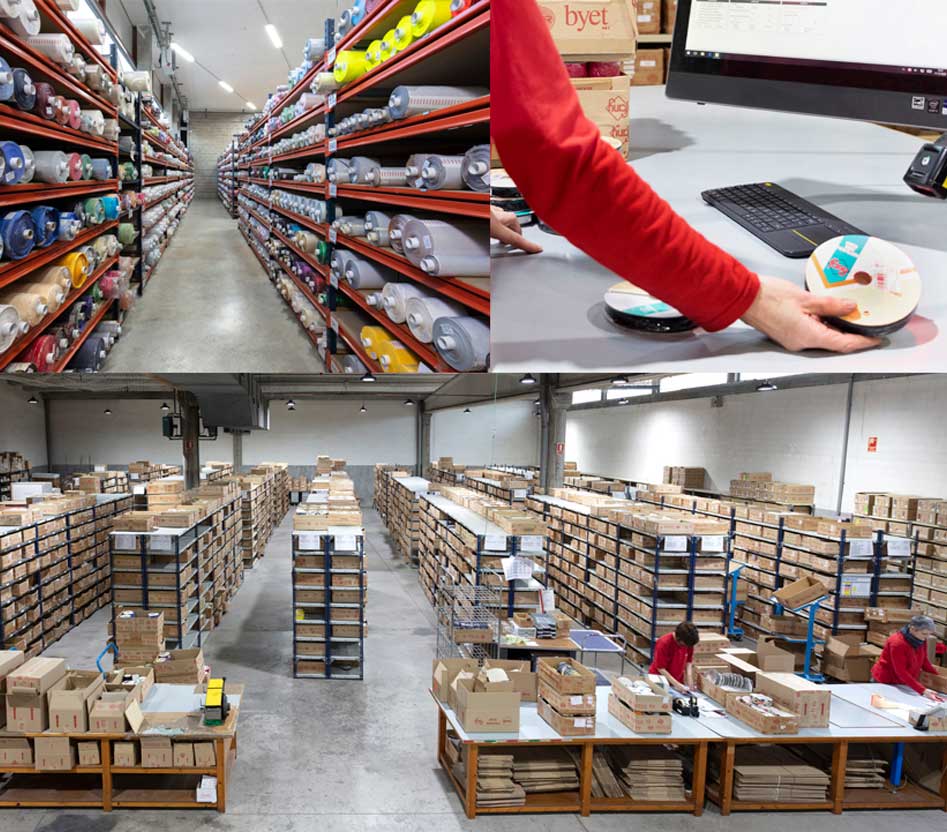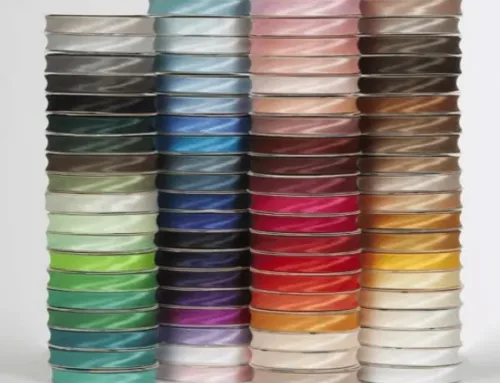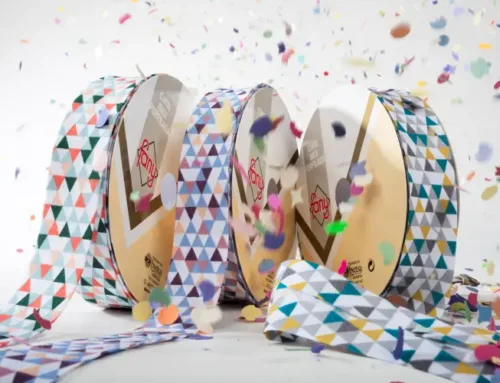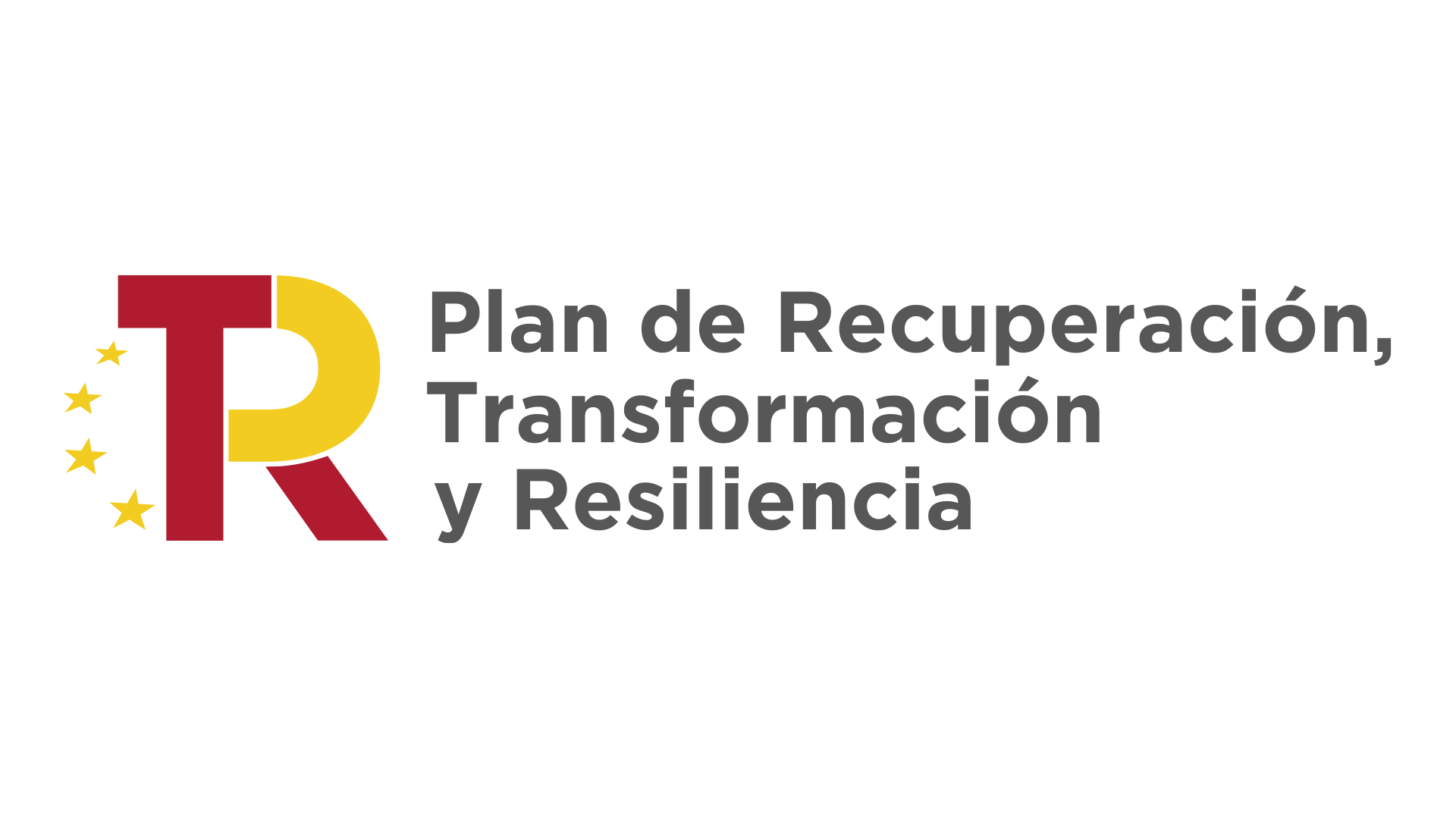Byetsa: more than fifty years manufacturing bias tapes
The world of bieses, if not known, may seem a small sector and even a little unknown. Byetsa is a Manresa company that has been dedicated to the manufacture of bias tapes for more than half a century. Five decades of continuous growth, more than 7000 references in the catalogue and a list of satisfied customers that does not stop growing. We enter the world of the tape to the bias of the hand of Francesco Zagnoni, Sales Manager of Byetsa.
The world of bias is unknown to many people. In which sectors is the potential of these tapes?
As it happens in general in everything in the world of the film, we are surrounded by appointments habitually, and we do not realize it. The bias is found in clothing, in household clothes, in furniture making such as mattresses or cushions. In all textile confections, it is difficult when you have to put together two fabrics that are complicated due to their shapes, curves, or profiles and the bias helps to be able to do it well. It helps that it is not noticed, that the tissue is not forced, that there are good transitions. If we made a comparison with the world of cinema, the bias would be that character who, despite not being the protagonist, his role is essential for the film to advance and the plot to exist.

Why did you decide to make a certain bias from one factory and not from another?
Well, we are guided a little by the demands of the market. A market requirement can be determined of fabric that currently we do not have and that the market begins to ask and want. We look at what trends are in the market and apply it to the bieses. As the bias is a necessary element to make a piece, if pieces of a certain factory are made, bieses will also be needed. For example, if pieces are made from organic cotton, the bieses must be organic cotton as well. In this particular case, we at Byetsa have seen a space, a market, and a world that goes in the direction of these sustainable materials. And what have we done? Well, we have created some lines of organic cotton bieses.
The large stock of raw materials allows them to be agile in orders
Among many other things, you stand out for the speed with which you serve your products, even when you have to manufacture them from scratch because they are references that you do not have in stock.
When a customer comes to the factory to visit it, the first thing we do is take it to the warehouse where we have the raw material. And customers are speechless because of course, it is very impressive because they see the entire extension of the factory full of clothes, fabrics, all colours, all kinds … That, from a company’s perspective, is an investment. But it is also true that this investment and this capacity, this power or power is what allows us that, when a client calls, he needs anything, our answer is “okay, in a week you have it”. Anything, and that, indeed, people like very much.

People are used to the fact that in the textile world, there are often temporalities and fashions that do not match their needs. A buyer of textile elements such as bieses is very difficult to receive a response like ours from a supplier.
For Byetsa, it is vital to ensure that there is the availability of the materials that customers want in the market. Not just now, but now and in the future. And since we are demanding, it is not enough for us to have the material: it has to be of the quality we require. So, it’s quite a search operation. We work with suppliers from Catalonia, and that is critical because of km 0 and because we value the Catalan industry. Km 0 because the material is proximity and leaves a minimal CO2 footprint, and also because the supply time is much faster. We must also recognize that we have excellent and high-quality suppliers.
With our suppliers, we have a relationship of decades and that helps a lot, having created a network of suppliers that works well is vital, and we have it. In Byetsa, when we have assured in a present and future way that we will be able to count on a raw material, then, we create the reference.
The sources of the material are hyper-controlled and hypers table sources for years and years. We do not launch a reference or collection on the market without having prepared it much, but we would be playing with our reputation and the consolidated image of a serious company.
Everything has to be perfect: the colour, the fabric. No margin of error possible
In all this process of material choice, design and preparation of bieses, very different professional profiles intervene…
Our team is essential. It is true that completely unique profiles are involved. There is a very technical part of the textile world. For example, whoever buys the material, has to be a great textile expert who analyses the factory every time, every batch that arrives… I tell you a very concrete example of our day to day so that it is understood: when a client tells us “I want this colour”, and sends us a sample so that we can find the colour that best suits us; there are team members who are dedicated to finding that exact colour. We have experts in colours, colourings, and dye processes.
From the technical standpoint, we have different textile machines: transformation, sewing and also machines that are customized for us.
Do you have custom-made machines?
Yes, tailor-made. For example, we have a machine that, while creating the roll, also creates the cylinder. That is, we self-produce the packaging, the product we never buy, we only buy the printed disc with our logo, etc. The first part of the machine creates the plastic part and the second part rolls it up. The operators we have that operate these machines are very specialized operators. When they detect that something is not perfect, they turn on the alarm and say “listen, the product is coming out like this, we stop, we continue …”. We have everything very controlled.

Fany and Bior: the two product lines
Byetsa has two product lines, Fany and Bior. The customer profile you have, thinking especially in the geographical area, is the same or are their markets that opt for one or the other?

Let’s see, there are countries that are traditionally textile producers, in these countries normally the two lines work very well. There we have the industrial customer and the retail customer. There are other countries that do not have such a beast tradition of textile production, it depends. For example, Portugal is a large textile producer of household clothing, and they also produce many clothes. But the tradition they have of house clothes is old, and they do it very well, so here there is a lot of production and in Spain, we know it. In Italy, there is a lot of textile production, in France too.
England is a country where we have a lot of haberdashery, there are productions, but they are productions of special items. Blankets for horses, things like that… All the Nordic countries use bieses much less because they work with wool and knitting, and the use of bias in these cases is a little lower.
So, where there is a forceful textile tradition, we can say that there is also a great sale of haberdashery materials. The haberdashery channel is a material that does not go later to the industrial producer, it goes to the private customer. Everything that are seamstresses, small producers of anything and artisanal materials, who need small quantities, buy from the wholesaler or trusted haberdashery.
What has been the evolution of the sale of the two product lines over time?
In Byetsa we see the two things and their evolution separately. The industrial has a small but steady growth. Lately, many productions are returning a little to the value of the national product. The growth in demand from the industry is small but steady. As for the haberdashery, Byetsa has had a giant sale during confinement and COVID-19 and that, has generated a considerable increase in the share of demand from individuals, who did not know what to do in their homes. And then, there is also an increase in Do It Yourself, an increase in people looking for an activity that fills their time and allows them to make their own unique creations. All that philosophy of doing things yourself, repairing and giving a second life to the pieces is gaining strength. Remodernizing and transforming pieces, little by little it is returning. We are seeing a lot of success in these workshops, and point-of-sale organizations that teach sewing, and we have started to serve them rapidly and quickly.
Where does Byetsa’s future point?
Your star product is the tape to the bias, but have you thought about marketing any product derived from this tape?
I’m not telling you no. We are open to exploring new paths and are evaluating possibilities. The future will surely take us some project of this type.
Speaking of future scenarios: what is the future challenge in the geographical area
Now we are trying to consolidate one of the projects that we have and that we are pursuing, which is to consolidate our presence in Mexico and make the leap to the United States. And this is a great project. Another microproject we have is Poland, and we are trying to create relationships with distribution companies and expand the market.
The bias has been with us since we are born. One of the biggest uses of bias is baby products. We are surrounded by bieses since we are born, and many times we are not aware of it.












Leave A Comment